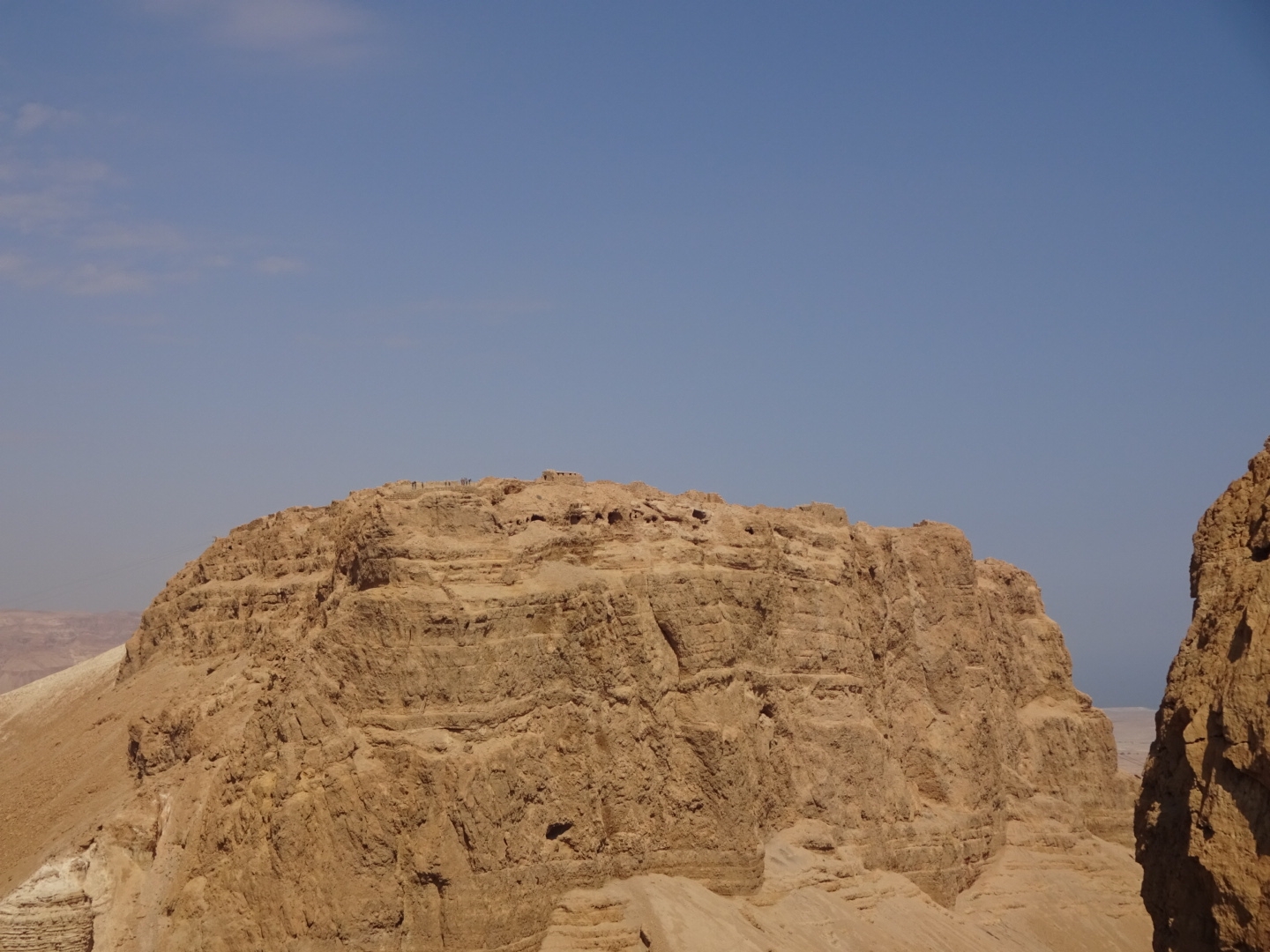Being among the first down to attack the breakfast buffet at my hotel, I was on my way by 8:00 am, heading north on a walkway beside the Dead Sea. Easy walking for the first 4 or 5 kilometres, it stopped at the place where the Dead Sea splits into two, a northern and southern part, a canal winds through the land that separates the two.
Rough walking followed over ground near the road (walking on the roadside would have been easier), then the path climbs steeply up towards Masada. As I crossed hills and valleys I began to wonder where the famous ruins were as my GPS showed them getting progressively closer. Then reaching the top of a hill (Mount El'azar) there it was in front of me. On the other side of a deep valley Mount Masada was surrounded by tall cliffs and topped by some inconspicuous masonry ruins, plus some tourists, small in the distance leaning over the railings.
 |
| Mount Masada, clearly an easy place to defend until the Romans built a siege ramp (on the left of this picture) |
I slithered down loose gravel and stones, then followed a path around to where the Romans had built a long, earthwork ramp to reach the top of the cliff, end the siege of the fortress and defeat the Jews once and for all.
Nearby there was the National Park office and some way further on, the campsite. No-one was at the campsite, on returning to the office I was told it would open at 4:00 pm. Thankfully, the helpful man in the office let me leave my rucksack there so I could explore the famous Masada ruins. Fortified by a Magnum Ice Cream and Coke I followed the Romans' siege works up to the Byzantine gate of the complex. For the next few hours I walked around the plateau instructed by the leaflet provided with the entrance ticket. Without the leaflet and helpful signs describing what you were looking at and its history, it would be just a collection of stone walls, with extensive views over the Dead Sea and surrounding mountains. As it was I knew I was at the remains of Herod's palace, the bathhouse or, somewhat unexpectedly, his swimming pool. Huge cisterns and extensive storerooms would have held enough food and water to enjoy a hedonistic lifestyle in the desert or withstand a long siege. Later Jewish remains attest to its place as the rebels last stand. They left a synagogue, within which a room has been built in which a rabbi was writing out some text in beautiful calligraphy. After the Romans left a community of Christian monks occupied the site leaving the remains of a Byzantine church. The walls of buildings at Masada have been partially reconstructed and around them, numerous tour groups of many nationalities perambulated. They usually had some device to distinguish who was in their group, I thought the lime green neckerchiefs of one party were particularly stylish.
So far I am the only person in the large campsite, illuminated by many bright lights. Unexpected as the guide for this section warned it might be full and be sure to book. Still I cannot complain, the toilets and showers are immaculately clean, the water does eventually run hot and there are picnic tables and sinks. The man from the office also showed me how to switch the campsite lights off when I was ready to sleep.
17 kilometres walked today to the campsite, excluding my walked up to the Masada ruins.


No comments:
Post a Comment